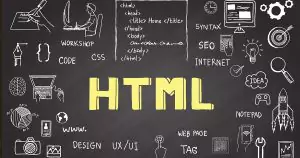When it comes to designing web pages, strategically adding spaces in your HTML code can greatly enhance the overall appearance and readability of your content. By utilizing various techniques, you can control spacing between elements and text, creating visually appealing and user-friendly web pages. In this comprehensive guide, we will explore different methods and provide examples of actual code to help you master the art of adding spaces in HTML.
Understanding the Importance of Extra Space
Spaces play a vital role in web design, contributing to a visually balanced layout and enhancing readability. By adding appropriate spacing, you create breathing room for your content, ensuring that users can easily digest and navigate through your web pages.
Creating Extra Spaces Before or After Text
To add spaces before, after, or between your text, you can employ the non-breaking space entity ( ) in HTML. This entity preserves multiple consecutive spaces, preventing them from collapsing into a single space. Here’s an example:
<p>This text has extra spaces.</p>Keeping Spacing in Pasted Text
When pasting text with extra spaces or tabs into your HTML, you may encounter formatting issues. To preserve the original formatting, you can utilize the HTML <pre> tag. This tag keeps the text as it was pasted, including any extra spaces. Here’s an example:
<pre>
This text has lots of spaces
</pre>Adding Extra Space Around Elements or Objects
In HTML, you have the ability to add additional spacing around any element or object by utilizing margins and padding. It is essential to understand the distinction between these two concepts:
- Margins: Margins create space outside an element’s borders, providing separation from neighboring elements.
- Padding: Padding adds space within an element’s borders, creating a buffer between the content and the element’s edges.
By adjusting margins and padding, you can precisely control the spacing around elements, ensuring an optimal layout. Here’s an example:
<div style="margin: 10px; padding: 20px;">
This content has extra space around it.
</div>Creating Tabs in HTML
Tabs serve as an effective way to organize and visually separate content. In HTML, you can achieve tab-like effects by adjusting the left margin of an element. Here’s an example:
<p style="margin-left: 40px;">
This paragraph appears indented as a tab.
</p>Adding Space Below Lines or Paragraphs of Text
To add extra space below a line or paragraph of text, you can utilize the <br> tag. This tag creates a line break, pushing the subsequent content down the page. However, it is important to use the <br> tag sparingly and consider alternative methods for consistent spacing. Here’s an example:
<p>This sentence contains example text.<br><br>As you can see, two breaks add space above.</p>Adjusting Line Spacing
Line spacing, also known as line height, significantly affects the readability of your text. CSS allows you to modify the line spacing, making it easier for users to read and comprehend your content. Here’s an example:
<p style="line-height: 1.5;">
This paragraph has increased line spacing for improved readability.
</p>Adding Space Around Images
Images are an integral part of web design, and adding space around them can enhance their visual impact. By utilizing CSS, you can precisely control the spacing around images. Here’s an example:
<img src="image.jpg" alt="Example Image" style="margin: 10px;">Conclusion
Mastering the art of adding spaces in HTML is a fundamental skill for creating visually stunning and user-friendly web pages. By employing techniques such as non-breaking spaces, margins, padding, line spacing adjustments, and the <br> tag, you can achieve well-structured and visually appealing content. Experiment with these methods, and let your creativity flourish. With precise spacing, you can create exceptional user experiences that captivate and engage your audience.
Remember to strike a balance between spaciousness and clutter, ensuring that your design remains clean and readable. By skillfully employing the techniques outlined in this guide, you will possess the tools necessary to create web pages that truly stand out.
FAQ
What is whitespace in HTML?
Whitespace refers to any sequence of spaces, tabs, or line breaks that are used to create visual spacing between elements or text in HTML. It helps improve readability and aesthetics.
How do I create indentation in HTML?
To create indentation in HTML, you can use CSS properties like margin or padding to add space on the left or right side of an element. Indentation helps structure and organize your content.
Can I add line breaks in HTML?
Yes, you can add line breaks in HTML using the <br> tag. Placing <br> in your HTML code creates a line break, allowing you to start a new line of text or separate content visually.
What are the best practices for HTML spacing and indentation?
For HTML spacing and indentation, it’s recommended to use CSS properties like margin and padding instead of excessive <br> tags. Consistent and clean coding practices help maintain readability and ease of maintenance.
Follow us on Reddit for more insights and updates.





Comments (0)
Welcome to A*Help comments!
We’re all about debate and discussion at A*Help.
We value the diverse opinions of users, so you may find points of view that you don’t agree with. And that’s cool. However, there are certain things we’re not OK with: attempts to manipulate our data in any way, for example, or the posting of discriminative, offensive, hateful, or disparaging material.